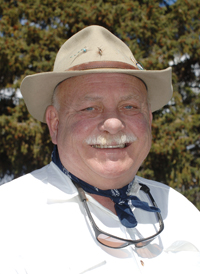With a nip in the air and the cool mornings, fall weather has arrived. I'll be doing my report on a bi-weekly basis through October. Currently, fishing is pretty damn good on all of our waters. If you can't catch now, I'd suggest maybe prepping your skis for the winter. This situation should continue into October. For my money, it's the best time of year to be casting a fly. Remember that all of your best activity from this point on will occur from late morning into the afternoon. Let's take a look at what to expect over the next couple of weeks.
SILVER CREEK—Fishing beautifully. A few anglers got in their last licks with Trico but from this point forward, I'd forget this hatch for the year. For at least another week, Callibeatis emergence of duns remains our main focus. It is prevalent in the floating sections. Partridge Parachute #18-20, a Speckled Thorax Dun #18-20 and Crippled Callibeatis #18-20 should do the job. One cautionary note: By this time of year, the actual duns get smaller and a size #20 might definitely be needed for success. Hopper fishing has been great as well. Some of the stories have been electric to say the least. Until the first hard freeze, any Foam-Bodied, Rubber Legged pattern moves fish. Finally, although it won't show until late September and is mainly an October hatch, one of the best hatches the Creek has to offer, the fall Blue Winged Olives (B. tricaudatus), will begin to appear. A Para BWO #20 or a Gray/Lt. Olive No Hackle #20 will pick off a few of the surface feeders but the vast majority of fish prefer and will key on the nymph stage, just under the surface. Mason Beatis Nymph #18, created for this hatch, is deadly. Regular Pheasant Tail #18 works in a pinch.
BIG WOOD RIVER— Hatches have been wishy-washy but the fishing has been better than great. Trico has been disappointing but Beatis has held its own in the afternoon. Parachute Adams #18-20 and Para Hares Ear #18-20, the smaller size preferable, seem to take all the fish you want. Even a Zebra Midge #18-20 has reported good success. I've been chasing around the big Red Quill (Timponoga hecuba) but so far, it is only spotty, spotty, spotty. It depends on where you are and when. I still have my fingers and toes crossed that the best is yet to come but it does have a history of terrible inconsistency. Regardless, I'll carry and fish Mason Red Quill and Mason Red Quill Cripple #10-12 plus Para Hares Ear and a Para Adams #12, just in case I stumble into it. Fishing these patterns blind is also not a bad idea. Hopper fishing has been up-and-down but it's always worth throwing a pattern if you're looking for a good fish.
WARM SPRINGS/TRAIL CREEK—A very nice report from Warm Springs told me that fishing is great. Although the fish tend to run smaller in size, they are plentiful, eager and very active. A Para #16-18 was all that was needed. I suspect that Trail Creek would fish as well and I would add a little Prince Nymph #14 to my arsenal, just in case they wouldn't cooperate on the surface.
BIG LOST—The upper river (Basin area) has been fished hard this summer and the water levels are low, but it is still fishing fairly well. Basic Para Adams #14-16, small Hopper patterns and a small Bead Head Prince Nymph #14-16, will find fish. The lower river with Trico in the morning, has been sensational and we should get another week or 10 days out of it. Para Adams #18-20 and Dave's Trico Spinner #18-20 do the job. Almost identical to Silver Creek in timing and importance, the Blue Winged Olives will begin showing at the end of the month. A big-time October hatch, a Para Lt Olive #18 and a Para Adams #18 does the trick. As always, never leave home without Prince Nymphs #10-12 and Copper Johns #12.
PENNY LAKE/LAKE CREEK—Supplementing fish to the lakes is pretty much over for the year but there should plenty of holdover fish to make a nice fishing outing. Bait and flies should both be effective.
SOUTH FORK OF THE BOISE—Since water is now stabilized for the year, fishing should be great. Hopper patterns are a must with Para Pink Albert's #14-16 a good bet for the afternoon. Partridge Caddis #14-16 should also be carried for they remain active quite late in the season.






































